Competitor Analysis
Competitor Analysis: Unlocking Business Strategies for Success
Introduction
In today’s fiercely competitive business landscape, understanding your competitors is not just an advantage; it’s a strategic necessity. Competitor Analysis (CA) is a powerful tool that enables businesses to gain insights into their market rivals, assess industry trends, and formulate effective strategies. This comprehensive article takes you on a journey through the intricacies of CA, exploring its various facets, global impact, economic implications, technological integrations, and future prospects. By the end, readers will grasp the significance of this analysis in navigating today’s dynamic business environment.
Understanding Competitor Analysis: Unveiling the Basics
Definition: Competitor Analysis is a systematic process of evaluating and studying competitors within an industry or market segment. It involves gathering and analyzing data about their products, pricing strategies, marketing campaigns, market share, and overall performance to gain a competitive edge.
Core Components:
-
Identification of Competitors: The first step is to identify direct and indirect rivals who operate in the same industry or target similar customer segments.
-
Data Collection: This involves gathering information through various sources like market research reports, industry publications, online databases, social media, and company disclosures. Data points may include financial performance, product offerings, pricing strategies, marketing tactics, and customer reviews.
-
SWOT Analysis: Conducting a SWOT (Strengths, Weaknesses, Opportunities, Threats) analysis of competitors helps businesses identify the internal and external factors that influence their rivals’ positions.
-
Positioning and Benchmarking: Understanding where competitors stand in the market and comparing their offerings with your own allows for strategic positioning and benchmarking.
-
Strategic Planning: The ultimate goal is to use the insights gained from CA to develop strategies that mitigate risks, leverage opportunities, and gain a competitive advantage.
Historical Context: CA has evolved over time, with its roots tracing back to the early 20th century when businesses began recognizing the value of studying rivals for survival and growth. The concept gained prominence in the 1980s as a key component of strategic management, particularly popularized by Michael Porter’s work on competitive strategy.
Global Impact and Trends: A Competitive Landscape Around the World
The global impact of CA is profound, with businesses adopting this practice across industries and regions. Here are some key trends shaping its landscape:
-
Digital Transformation: The digital age has revolutionized CA by providing access to vast amounts of data and advanced analytics tools. Online platforms, social media, and big data analytics enable more in-depth analysis, allowing companies to monitor competitors’ online activities, customer interactions, and market trends in real time.
-
Global Expansion: International businesses are using CA to navigate new markets and understand local competition. This is particularly crucial for multinational corporations expanding into foreign territories, where cultural differences, regulatory frameworks, and unique consumer preferences require tailored strategies.
-
Emerging Markets as Powerhouses: Countries like China, India, and Brazil are witnessing rapid economic growth, fueling intense competition within their regions and on a global scale. CA is essential for companies looking to establish or maintain a foothold in these markets.
-
E-commerce Disruption: The rise of e-commerce has disrupted traditional retail models, forcing brick-and-mortar stores to adapt. CA is vital for understanding online retailers’ strategies, pricing models, and customer engagement tactics, which can inform omnichannel retail approaches.
Economic Considerations: Market Dynamics and Investment Scenarios
CA plays a critical role in shaping economic systems by influencing market dynamics and investment decisions:
-
Market Analysis: Understanding competitors helps businesses gauge market demand, identify untapped niches, and predict industry trends. This knowledge is crucial for pricing strategies, product development, and market positioning.
-
Investment Decisions: CA aids investors in identifying promising sectors, emerging technologies, or innovative business models. By studying successful competitors, investors can make informed choices regarding startup funding, mergers, and acquisitions.
-
Monopoly and Antitrust Concerns: Regulatory bodies worldwide closely monitor CA to prevent anti-competitive behaviors and maintain a fair market environment. Companies must ensure their practices do not distort market competition or lead to price fixing.
Technological Advancements: Digital Tools for Competitive Insight
Technology has revolutionized the way CA is conducted, opening doors to new possibilities:
| Technological Advancement | Impact on CA | Future Potential |
|---|---|---|
| Data Analytics and AI | Advanced analytics tools enable in-depth market insights, customer behavior analysis, and predictive modeling. AI algorithms can process vast data sets to uncover hidden patterns and trends. | AI-driven CA will provide real-time competitive intelligence, enabling businesses to make rapid strategic adjustments. |
| Web Scraping and Data Mining | These techniques gather data from various online sources, including social media, reviews, and competitor websites, for in-depth analysis. | As web scraping technology improves, companies can access more diverse data points, enhancing the accuracy of their CA. |
| Social Media Monitoring | Tracking competitors’ social media activities helps businesses understand customer perceptions, brand reputation, and emerging trends. | With the rise of influencer marketing, social media monitoring will become even more critical for CA. |
| Market Research Platforms | Online market research platforms provide access to global data, consumer insights, and industry reports, streamlining the CA process. | These platforms are expected to integrate AI and predictive analytics, offering personalized CA dashboards tailored to individual business needs. |
Policy and Regulation: Navigating Legal Landscapes
The legal framework surrounding CA varies across jurisdictions but is designed to protect fair competition and consumer interests:
-
Antitrust Laws: Many countries have antitrust or competition laws that prohibit anti-competitive practices, price fixing, and market division among competitors. Businesses must ensure their CA activities comply with these regulations.
-
Data Privacy Regulations: With the increasing use of data in CA, regulations like GDPR (General Data Protection Regulation) in Europe and CCPA (California Consumer Privacy Act) in the US protect consumer data privacy. Companies handling competitor data must adhere to these laws.
-
Industry-Specific Guidelines: Certain industries have specific guidelines for CA. For example, financial institutions may face additional scrutiny when analyzing competitors’ pricing strategies or investment patterns.
Challenges and Criticisms: Overcoming Obstacles
Despite its benefits, CA faces several challenges and criticisms:
-
Data Quality and Bias: Inaccurate or biased data can lead to flawed analyses. Ensuring the quality and reliability of data sources is crucial. Companies should verify information from multiple channels to avoid relying on a single biased source.
-
Dynamic Market Conditions: Markets are constantly evolving, making it challenging to keep CA up-to-date. Regular monitoring and adjustments are necessary to account for changing trends, technological advancements, and competitive moves.
-
Ethical Concerns: Critics argue that excessive CA can lead to unethical practices, such as espionage or unfair business tactics. Companies must uphold ethical standards and respect intellectual property rights during their analysis.
Actionable Solutions:
- Implement rigorous data validation processes to ensure the accuracy of information sources.
- Utilize automated tools for regular market monitoring to keep up with dynamic changes.
- Establish internal guidelines and training programs to promote ethical CA practices.
- Foster a culture of innovation to differentiate oneself from competitors while adhering to legal boundaries.
Case Studies: Real-World Applications of CA
Case Study 1: Amazon’s CA Strategy
Amazon, the e-commerce giant, is renowned for its relentless focus on competition. It uses CA extensively to understand both direct and indirect rivals in the online retail space. By analyzing competitors’ pricing strategies, product offerings, and customer reviews, Amazon optimizes its own services, ensuring it remains a market leader. This strategy has enabled Amazon to expand into various sectors, from cloud computing (Amazon Web Services) to streaming services (Prime Video), leveraging insights gained through CA.
Case Study 2: Apple’s Differentiation Through Design
Apple employs CA to differentiate itself in the highly competitive technology industry. By studying competitors’ products and features, Apple identifies opportunities to innovate and create unique selling propositions. For instance, the company focused on design and user experience to set its devices apart from rivals. This strategic approach has contributed to Apple’s success and loyal customer base, demonstrating how CA can drive product differentiation.
Case Study 3: McDonald’s Global Expansion and Local Adaptation
McDonald’s, the fast-food giant, successfully navigates global markets through effective CA. It adapts its menu and marketing strategies to local tastes and preferences while maintaining its brand identity. For example, in India, McDonald’s introduced vegetarian options to cater to cultural dietary practices. This case highlights how CA enables businesses to expand internationally while remaining competitive in diverse markets.
Future Prospects: Emerging Trends and Strategic Considerations
The future of CA is filled with exciting possibilities, driven by technological advancements and evolving market dynamics:
-
Real-Time Competitive Intelligence: As technology advances, CA will become more dynamic, providing real-time insights into competitors’ activities. This allows businesses to respond swiftly to changes in the market.
-
Predictive Analytics: AI-driven predictive analytics will enable companies to anticipate competitors’ moves and plan accordingly. This could involve forecasting product launches, pricing adjustments, or marketing campaigns.
-
Global Market Analysis: With the rise of global e-commerce and digital platforms, CA will extend beyond national boundaries. Companies must understand international competition to succeed in today’s interconnected world.
-
Customer-Centric CA: The future of CA may shift focus towards customer experiences and preferences. By analyzing customer feedback and behaviors across competitors, businesses can create more personalized offerings.
Conclusion: Empowering Businesses for Long-Term Success
Competitor Analysis is a dynamic and essential tool for businesses aiming to thrive in today’s competitive landscape. It equips companies with the insights needed to make strategic decisions, adapt to market changes, and stay ahead of rivals. Through a comprehensive understanding of CA’s core components, global impact, economic considerations, technological advancements, and future trends, businesses can harness its power effectively.
By learning from case studies and adopting best practices, organizations can navigate complex markets, overcome challenges, and capitalize on opportunities. As the business world continues to evolve, CA will remain a cornerstone of strategic management, enabling companies to foster growth, innovation, and long-term success.
FAQ: Answering Common Questions
Q: How often should businesses conduct CA?
A: CA is an ongoing process that should be performed continuously to stay updated with market dynamics. Regular reviews are essential, especially during significant industry shifts or when new competitors emerge.
Q: Can CA be used for new business ventures?
A: Absolutely! CA is valuable for startups seeking to establish themselves in a competitive market. It helps identify gaps in the market, understand potential rivals, and develop unique value propositions.
Q: How can small businesses conduct effective CA on a limited budget?
A: Small businesses can leverage free or low-cost online tools for basic CA. They can also partner with industry associations or research firms that provide competitive intelligence reports. Networking within the industry and staying informed through trade publications are also cost-effective strategies.
Q: Is there an ethical way to conduct CA?
A: Yes, ethics should be at the core of any CA practice. Companies should respect intellectual property, maintain data privacy, and avoid unethical practices like espionage or price fixing. Ethical CA fosters a fair and transparent business environment.
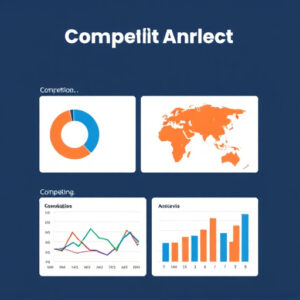
Reviewly: Track Competitors’ Campaigns & Gain Marketing Insights
Competitor Analysis using Reviewly involves tracking promotional campaigns to gain insights into competitor strategies. Reviewly offers tools to monitor sales…
Unleash SEO Power: Analyze Competitors for Keyword Wins
Competitor Analysis reveals hidden keywords and content gaps, enabling businesses to create standout content in a crowded digital market. By…

Refine Services via Reviewly Local Search Customer Feedback Analysis
Reviewly Local Search provides a centralized platform to analyze competitor strategies and customer feedback from various sources. By consolidating insights,…
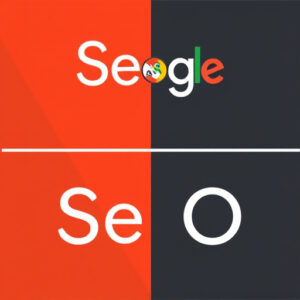
Uncover Market Secrets: Reviewing Competitor Pricing for Local Search Dominance
Understanding your target audience and local search trends through tools like Reviewly Local Search is crucial for effective market positioning.…
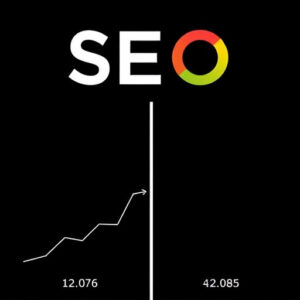
Unleash Growth: Mastering Competitor Analysis for Strategic Advantage
Competitor Analysis is a strategic tool for businesses aiming to outperform industry rivals by understanding market trends and opportunities through…
Unlocking Influencer Partnerships: A Local Search Strategy Guide
Understanding competitor influencer partnerships through platforms like Reviewly Local Search is key to staying competitive in today's digital landscape. By…

Master Competitor Analysis with Reviewly: Uncover Business Strengths and Weaknesses
Competitor Analysis with Reviewly: Gain a competitive edge by examining rivals' products, pricing, marketing, and online presence via platforms like…
Optimize Customer Service: Analyze Competitor Responsiveness Online
In today's digital era, swift and effective customer service responsiveness sets businesses apart, especially in online markets. Conducting a Competitor…
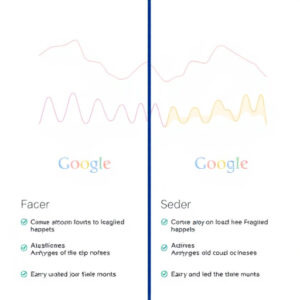
Unleash Business Growth: Identify Underserved Markets via Competitor Analysis
Reviewly Local Search is a powerful tool for businesses aiming to grow by identifying underserved markets through competitor analysis. By…

Uncover Hidden Markets: A Comprehensive Guide to Competitor Analysis for Business Growth
Competitor analysis is a strategic process that helps businesses identify market gaps and unique opportunities by understanding their competitors' strengths…

Master Competitor Analysis with Reviewly for Strategic Industry Edge
Competitor Analysis is a crucial strategic tool for businesses aiming to maintain market leadership by examining rivals' strengths, weaknesses, strategies,…

Master Competitor Analysis with Reviewly’s Keyword Tracking Power
Reviewly, a cutting-edge competitor analysis tool, helps businesses stay ahead in the digital landscape. By tracking keyword rankings and online…

Stay Ahead of Competitors: Master Innovation with Reviewly’s Analysis Tool
Competitor Analysis Made Effortless with Reviewly: Businesses can stay ahead by leveraging Competitor Analysis, which involves tracking rivals' strategies, strengths,…
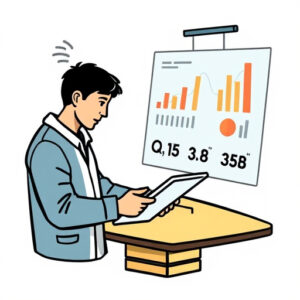
Unleash Growth: Mastering Underserved Markets via Competitor Analysis & Local Search Review
Underserved markets offer significant growth potential for businesses by addressing unmet demands and service gaps. By employing competitor analysis and…
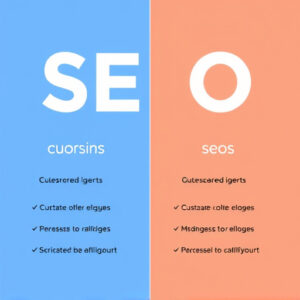
Master Networking: Uncover Competitors’ Secrets with Strategic Event Monitoring
Participating in industry events and conferences is a key strategy for business growth, offering insights into trends, networking opportunities, and…

Elevate Your Strategy: Unlocking Success via Competitor Analysis
Competitor Analysis is a powerful strategy for businesses aiming to stay competitive in today's market, offering insights into consumer behavior…

Reviewly: Unlocking Competitor Promotional Secrets for Business Growth
In a competitive business landscape, understanding rivals is crucial for success. Competitor Analysis through tools like Reviewly provides valuable insights…

Master Competitor Analysis: Tracking Online Presence for Strategic Planning
In today's competitive business environment, Competitor Analysis is a vital strategic tool that allows companies to stay ahead by understanding…
Reviewly: Unveiling Competitor Ads Through Local Search Insights
Reviewly Local Search is a powerful tool for businesses aiming to dominate local search results. By analyzing competitor advertising strategies,…
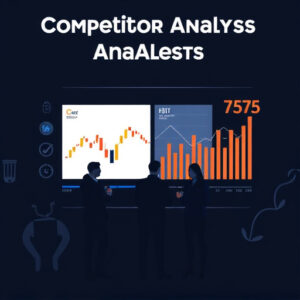
Uncover Influencers via Competitor Analysis: Strategic Partnerships Unveiled
Competitor Analysis is key to successful marketing strategies, especially for understanding influencer partnerships. By identifying influencers used by rivals and…